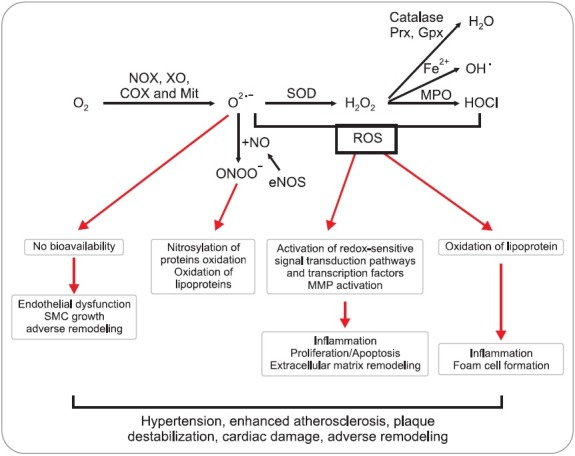Fig. 1. Cellular antioxidant systems and their biological consequences in cardiovascular system. Superoxide anion (O2•−) can be produced by numerous oxidoreductases [NADPH oxidase (NOX), xanthine oxidase (XO), cyclooxygenase (COX) and mitochondrial enzymes (Mit)]. Superoxide can react with nitric oxide (NO), forming peroxynitrite (ONOO-) and leading to loss of NO bioavailability. Superoxide dismutase (SOD) can convert superoxide to hydrogen peroxide (H2O2). ROS can stimulate redox-sensitive signaling pathways, such as tyrosine kinases, phosphatases, and transcription factors, by oxidizing redox-sensitive target proteins. O2•− and H2O2 can also increase expression of matrix metalloproteinases, promote endothelial cell apoptosis and contribute to lipid oxidation.

